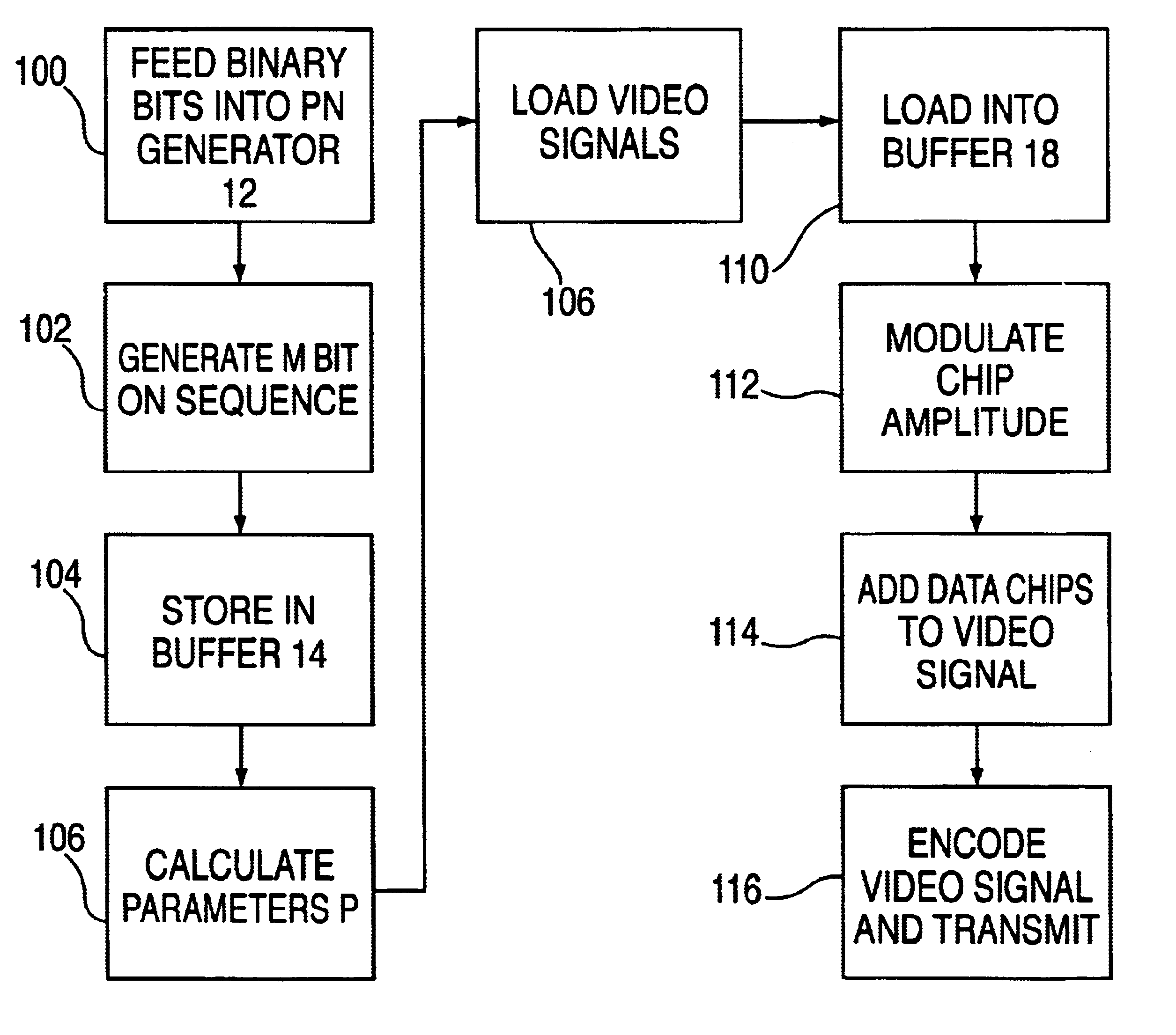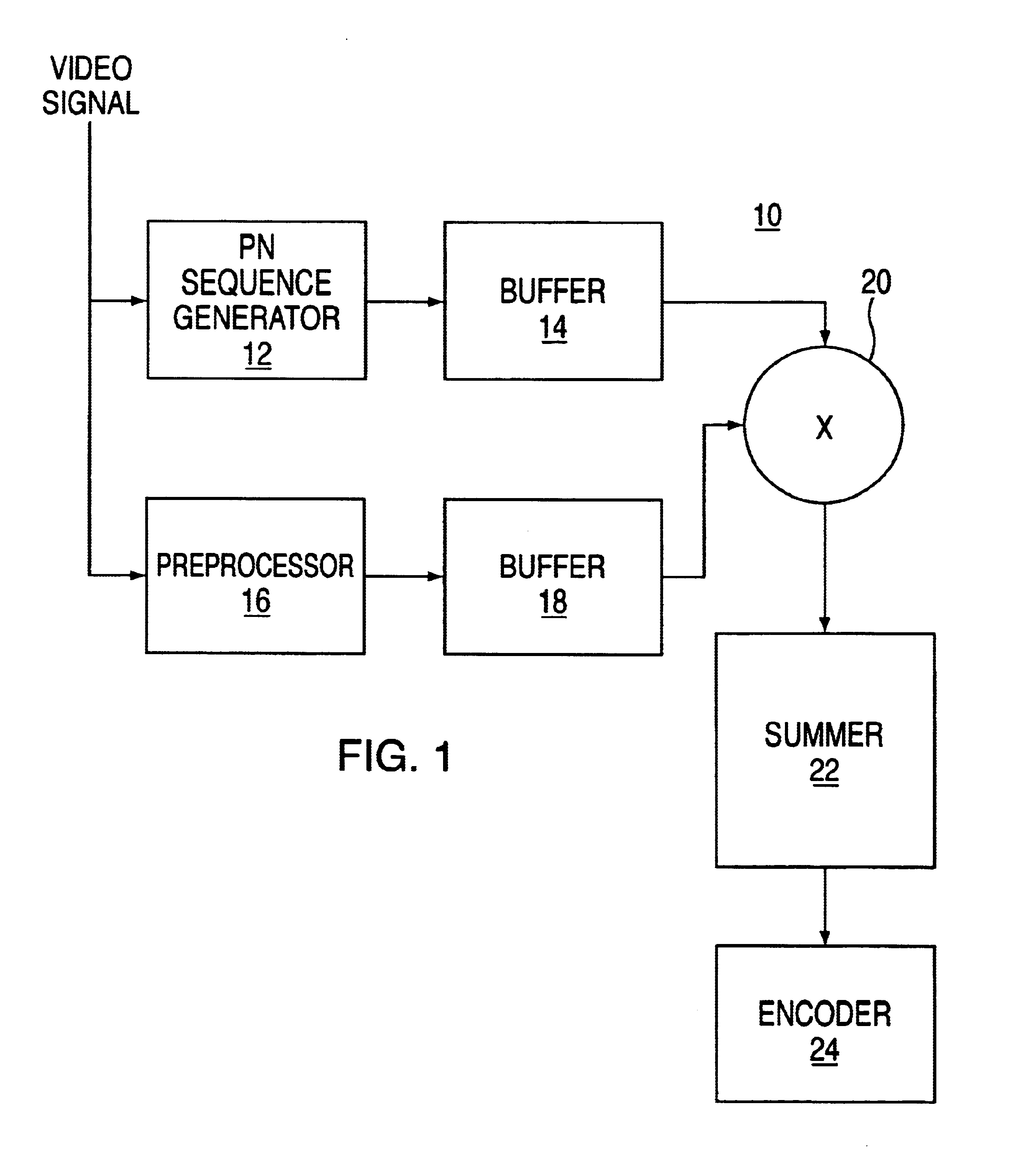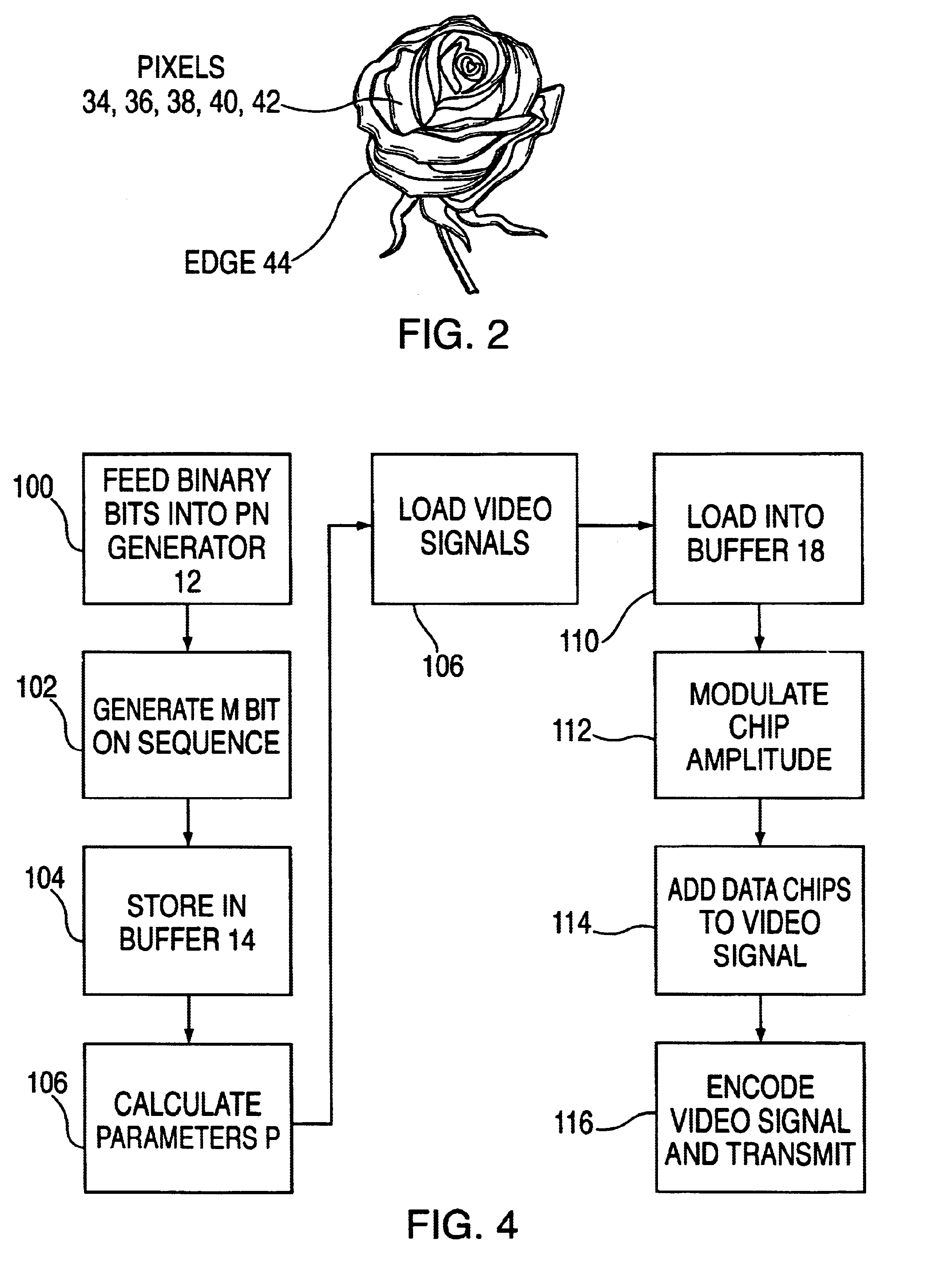Method for transmitting data on a viewable portion of a video signal
a video signal and data technology, applied in the field of video signal data transmission, can solve the problems of inadequacies in data insertion, too white or too black fields, etc., and achieve the effect of high reliability
- Summary
- Abstract
- Description
- Claims
- Application Information
AI Technical Summary
Benefits of technology
Problems solved by technology
Method used
Image
Examples
Embodiment Construction
Ideally, the data is superimposed on the video signal using a chip for each data bit so that the data is transmitted at a very high rate. This approach requires that the chips have a high amplitude so that they can be detected accurately. However, the approach is difficult to achieve from a practical point without creating a visible and therefore unacceptable effect at the decoding end. Even adding standard error correction codes to a group of bits of lower amplitudes is impractical because it will generally not allow error-free decoding. For this reason, a statistical approach is taken. Instead of transmitting a chip for each bit of information, a large number of chips is transmitted for each bit. At the receiver, the received chips are compared with each symbol, and the one symbol having the highest correlation with the detected code is considered to represent the transmitted symbol, as described in detail below.
FIG. 1 shows a block diagram of a portion of the system constructed i...
PUM
 Login to View More
Login to View More Abstract
Description
Claims
Application Information
 Login to View More
Login to View More - R&D
- Intellectual Property
- Life Sciences
- Materials
- Tech Scout
- Unparalleled Data Quality
- Higher Quality Content
- 60% Fewer Hallucinations
Browse by: Latest US Patents, China's latest patents, Technical Efficacy Thesaurus, Application Domain, Technology Topic, Popular Technical Reports.
© 2025 PatSnap. All rights reserved.Legal|Privacy policy|Modern Slavery Act Transparency Statement|Sitemap|About US| Contact US: help@patsnap.com



